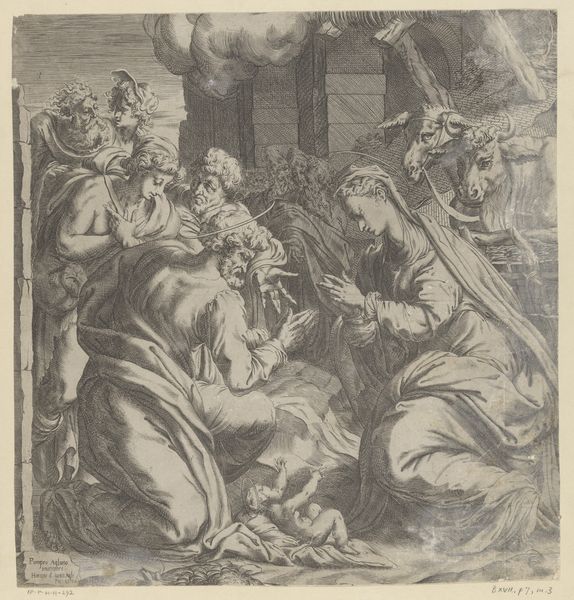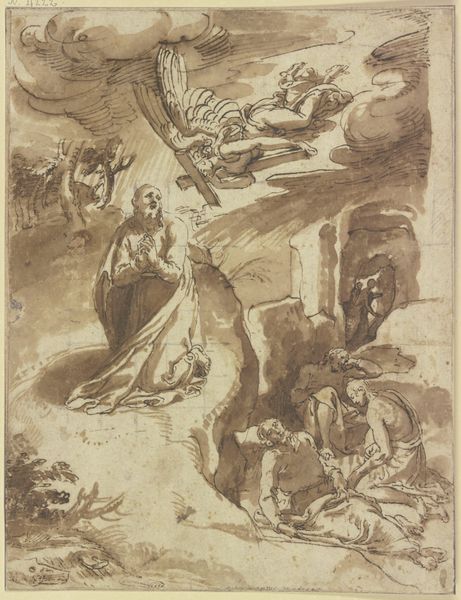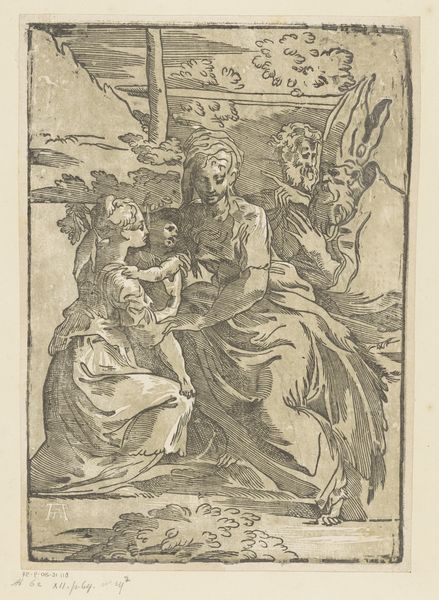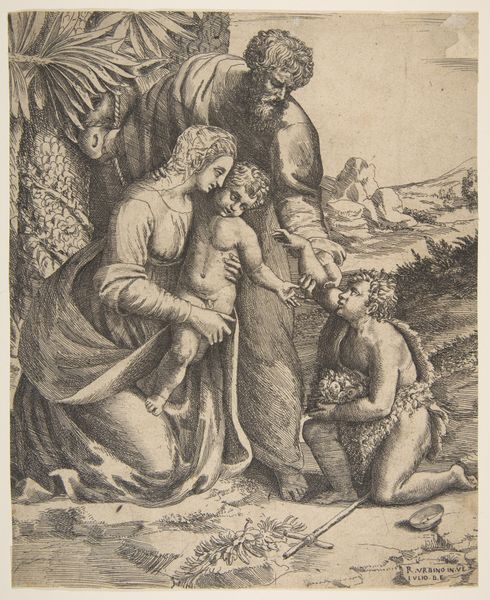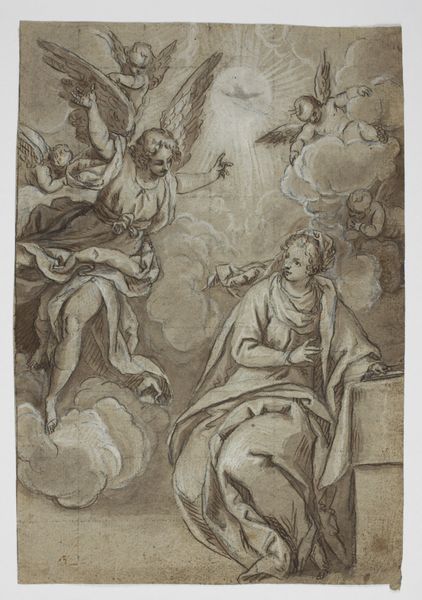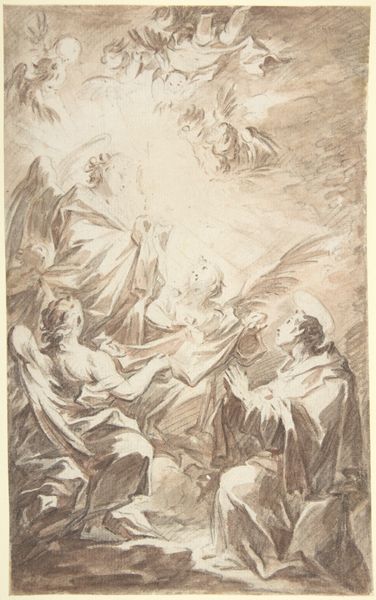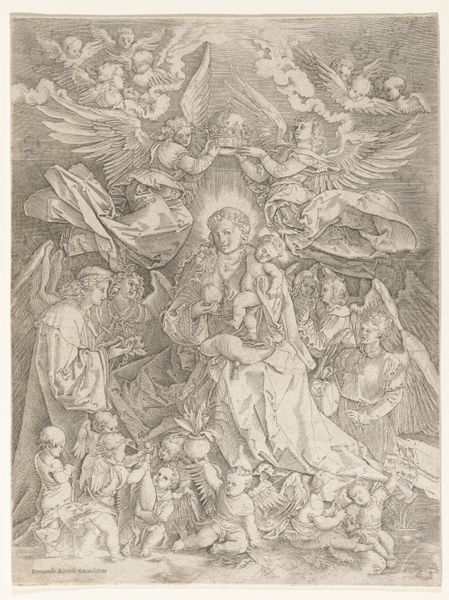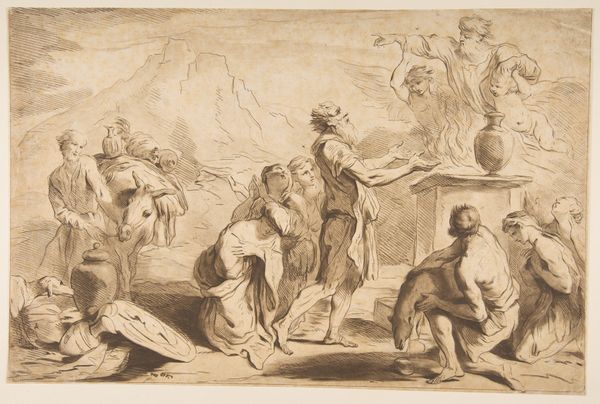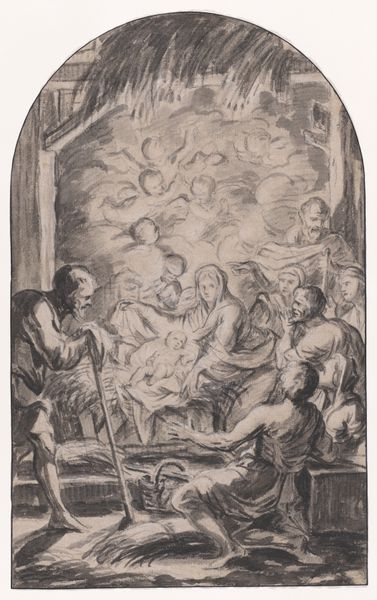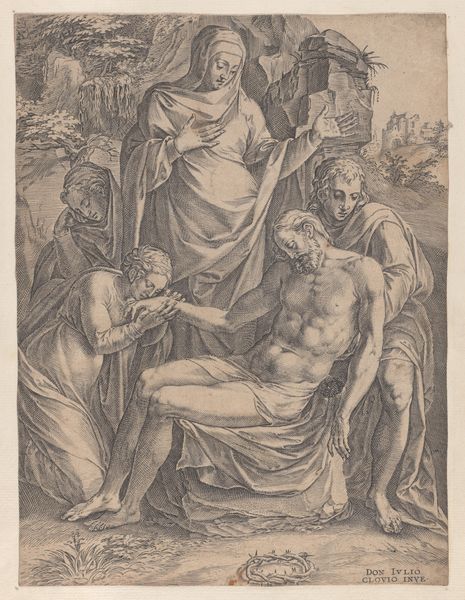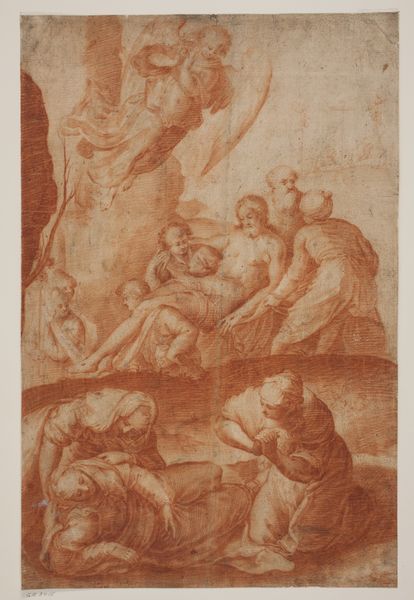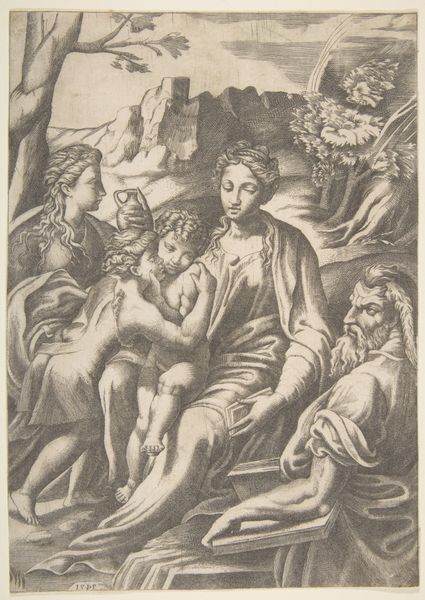
The Virgin and Child among angels in the clouds with Sts John the Baptist and Jerome, after Paolo Veronese’s painting formerly in S. Francesco della Vigna, Venice 1528 - 1588
0:00
0:00
drawing, charcoal
#
drawing
#
charcoal drawing
#
figuration
#
oil painting
#
pencil drawing
#
charcoal
#
history-painting
#
italian-renaissance
Dimensions: 562 mm (height) x 327 mm (width) (bladmaal)
Curator: What strikes me immediately about this drawing is its ethereal quality. The figures seem to float. Editor: Exactly! That smoky, charcoal effect lends it this dreamy, almost unsettling, ambiance. I see both tenderness and a looming judgment. Curator: This piece, held here at the SMK, is titled "The Virgin and Child among angels in the clouds with Sts John the Baptist and Jerome, after Paolo Veronese’s painting formerly in S. Francesco della Vigna, Venice.” While anonymous, it’s estimated to have been created sometime between 1528 and 1588, likely as a study or copy of Veronese’s work. It employs charcoal and perhaps some pencil. Editor: The composition, mirroring Veronese, positions the Virgin and Child regally above, flanked by angels— one even playing what looks like a lute. Below, we have Saint John the Baptist and Saint Jerome, powerful male figures who were themselves powerful, historical influencers. I wonder what narrative or power dynamic is reflected by the way those figures are rendered within this context. Curator: That hierarchy was central to Renaissance art, reflecting societal structures where the Church and nobility were placed, literally, on a pedestal. It was all about reinforcing doctrine and social order through visual cues. Notice how even the perspective guides your eye upward, reinforcing the divine status of Mary and Jesus. Editor: I see that. The artist skillfully uses charcoal to create these luminous cloud effects, which certainly softens what might otherwise be a stark display of religious authority. It makes you consider who this piece was made for, its function in the social landscape. Was it propaganda or personal devotion or both? How does one negotiate their beliefs through art that often served political agendas? Curator: It speaks to how complex the role of the artist was during this period. Patrons dictated subject matter and style, influencing even what colors were used! This drawing serves as an interesting window into that dynamic. Editor: Absolutely. Viewing the artist as a creative within societal structures shifts how we engage. Understanding the era in which this image was created certainly offers greater meaning to its interpretation. Curator: Indeed. It pushes us to examine the artwork as an artifact, a product of its time, embedded within a web of socio-political relationships. Editor: A sobering, yet necessary lens through which we see more than brushstrokes on a page.
Comments
No comments
Be the first to comment and join the conversation on the ultimate creative platform.
